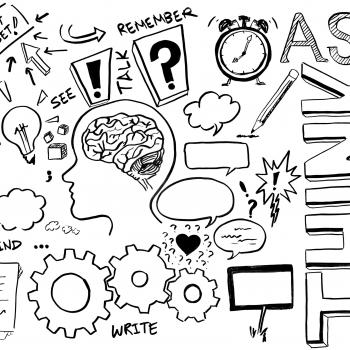Non-Comprehension: What and how?
Non-comprehension refers to the inability of a student to understand or grasp the subject matter being taught. It can manifest in various forms, such as a lack of understanding of key concepts, inability to apply knowledge to practical situations, or difficulty in connecting different pieces of information to form a coherent understanding.
Non-comprehension can arise due to several factors. One primary reason is the absence of a strong foundation in the prerequisite knowledge and skills required for a particular subject. If a student lacks the necessary background knowledge, it becomes challenging for them to comprehend more advanced topics. For example, in mathematics, a weak understanding of basic arithmetic can impede a student’s ability to comprehend complex algebraic equations.

Furthermore, non-comprehension can be influenced by the teaching methods employed in the classroom. If the instructional approach does not align with the individual learning needs and preferences of students, it can hinder their comprehension. For instance, some students may struggle with traditional lecture-based teaching, while others may require more visual or hands-on learning experiences to grasp concepts effectively.
Another factor contributing to non-comprehension is the lack of engagement and motivation. Students who are disinterested or demotivated are less likely to invest effort in understanding the subject matter. External factors, such as a challenging home environment, personal issues, or a lack of support systems, can also affect a student’s ability to comprehend and retain information.
Non-comprehension has significant implications for both individual students and the education system as a whole. For students, struggling to comprehend can lead to feelings of frustration, low self-esteem, and disengagement from the learning process. Persistent non-comprehension may result in academic underachievement and a reduced likelihood of pursuing further education or career opportunities in related fields.

From an educational standpoint, non-comprehension highlights the need for effective teaching strategies and support mechanisms. Teachers play a crucial role in addressing non-comprehension by employing various instructional techniques, such as differentiated instruction, scaffolding, and formative assessment. These approaches can help identify and address students’ individual learning gaps and provide targeted interventions to improve comprehension.
Additionally, schools and educational institutions must foster a positive and inclusive learning environment that supports students’ emotional well-being. Providing additional resources, such as tutoring, mentoring, or counseling, can also assist students in overcoming non-comprehension challenges.
Why Non-Comprehension?
Non-comprehension in students can stem from various factors that hinder their understanding of the subject matter. Here are five major reasons:
1. Lack of prior knowledge:
Non-comprehension often arises when students lack the necessary background knowledge or prerequisite skills required to understand a particular topic. If they haven’t mastered foundational concepts, it becomes challenging to grasp more complex ideas built upon them.
2. Ineffective teaching methods:
The instructional methods employed in the classroom can significantly impact students’ comprehension. If the teaching approach does not align with their learning preferences or fails to cater to individual needs, it can impede understanding. A one-size-fits-all approach may not accommodate the diverse learning styles and needs of students.
3. Poor engagement and motivation:
Students who lack motivation or interest in the subject matter are more likely to struggle with comprehension. A disengaged student may not invest effort in understanding the material, leading to non-comprehension. Factors such as a lack of relevance to real-life situations or uninspiring teaching methods can contribute to low engagement.

4. Limited language proficiency:
Language barriers, whether it’s a student’s native language or the language of instruction, can hinder comprehension. If students struggle with understanding the vocabulary, grammar, or nuances of the language used in the classroom, it becomes challenging for them to comprehend the content.
5. Cognitive processing difficulties:
Some students may have specific cognitive processing difficulties that affect their comprehension. Conditions like learning disabilities, attention deficit hyperactivity disorder (ADHD), or executive functioning issues can make it harder for students to process and retain information effectively.

Overcoming Non-Comprehension
Overcoming non-comprehension in students requires a multi-faceted approach that involves educators, students, and the educational system as a whole. Here are few steps that can be taken to address and mitigate this issue:
1. Identify individual learning needs: Recognize that each student has unique learning preferences, strengths, and areas of improvement. Conduct assessments or use formative assessment strategies to identify specific areas of non-comprehension and tailor instruction accordingly.
2. Build a solid foundation: Address gaps in prior knowledge by ensuring students have a strong foundation in the fundamental concepts and skills necessary for the subject. Offer remedial support or targeted interventions to fill in the missing knowledge gaps.
3. Use scaffolding techniques: Scaffold learning by breaking down complex concepts into smaller, manageable steps. Provide guidance, support, and gradually remove assistance as students gain understanding and confidence. Scaffolding can include providing visual aids, graphic organizers, step-by-step instructions, or modelling examples.
4. Develop language skills: Support students with limited language proficiency by providing additional language support. This can include vocabulary-building exercises, explicit instruction on language structures, offering bilingual resources, or utilizing peer support systems.
5. Collaborate and communicate: Maintain open lines of communication with students, parents, and colleagues. Regularly communicate progress, concerns, and strategies being used to address non-comprehension. Involve parents in supporting their child’s learning journey and seek their input on strategies that may be effective.
Conclusion
It is essential to recognize that non-comprehension is not an inherent inability to learn but rather a temporary barrier that can be overcome with the right support and interventions. By acknowledging the diverse learning needs of students and employing effective teaching strategies, educators can help students develop a solid foundation of comprehension and promote lifelong learning.
Also, It’s important to note that these reasons for non-comprehension are not mutually exclusive, and students may experience a combination of these factors. Identifying and addressing these underlying causes can help educators implement targeted interventions to support students in overcoming non-comprehension and fostering a more inclusive and effective learning environment.
By implementing the above mentioned steps, educators can create a supportive learning environment that helps students overcome non-comprehension, develop a deeper understanding of the subject matter, and ultimately achieve academic success.


